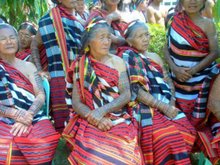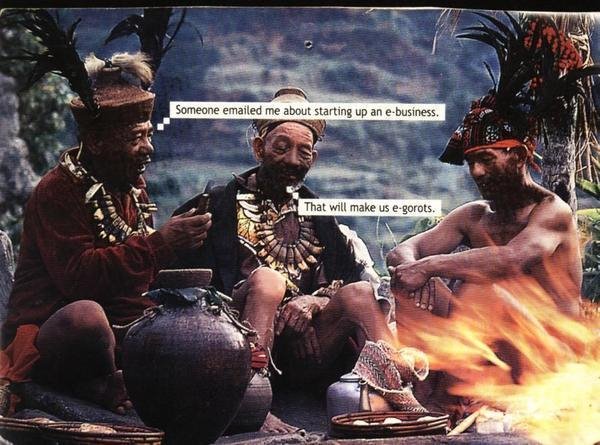(This is a section of what I wrote in my paper for my Effective Teaching class in the 1st semester of 2005.)
I realized during my stay here in Manila, and even when I was studying in Baguio City that people have so many misconceptions about indigenous peoples in the Cordilleras, collectively called Igorots. I also realized that the farther one goes, the more numerous and unsettling the misconceptions are as I experienced firsthand when I went to some parts of Mindanao. This is partly due to the textbooks used in schools, which obviously were not updated; also due to hearsay, and generalizations.
When the Missions group had a meeting one time to plan their exposure trip to Bontoc this semester break, one of them said to me that he wanted to go to the areas where the indigenous peoples in my hometown are so he could observe the culture. I was speechless for a moment, and then I told him that the people there are the indigenous people themselves, including myself. He was thinking of tribes that were up, up in the mountains and are very far away from so-called civilization, which is so much untrue for indigenous peoples nowadays.
In fact, that is the reason why I am focusing on the Bontoc Igorots, of which I am a part of, as a topic for my manual because there are a lot of complex issues involved. We are no longer dealing with indigenous peoples who are segregated from society, but are now immersed in and influenced by other cultures due to accessibility, intermarriage, migration, immigration, education, media, religion, and a whole lot of factors. With regards to media, I was even surprised to discover that there is a lot of information about Bontoc in the internet.
Cultural change is so rapid that there is now a great generation gap between the older generations from that of the succeeding generations. And the question is no longer about one’s identity as a Bontoc Igorot, but how to maintain a certain sense of identity in the midst of all these factors. I think that we can no longer expect to have a Bontoc Igorot identity or world view that has been left untouched or unchanged by the factors mentioned above. There would still be an identity, but one that has emerged from the influence and changes rendered by the factors.
I believe identity is important because it provides a person a sense of belongingness and community. One of the customs of the Bontoc people is that when a mother gives birth to her child, the father buries the placenta of the child under their house. I asked my grandmother why they had to do that and she said it is to give the child roots; that wherever s/he goes, s/he always comes back home to where a part of her/him is buried. That is such a great assurance for a person’s self-worth, that there is a place where s/he can always come back to no matter where life leads her/him.
But how does one balance respect for one’s own culture while integrating other cultures? This is of course a universal dilemma for all peoples. The media has opened a lot of options for us that it is difficult and at times, impossible to hold on to one’s identity as a part of a group, or a nation for that matter, unless extra measures are implemented. The world has indeed become what Marshall McLuhan termed ‘a global village’.
This is where education comes in, because it is a powerful tool to affirming the importance of holding on to one’s roots and one’s sense of identity, and at the same time, being open to other influences. It can serve as a guide for students to appreciate their own culture and in turn, appreciate other cultures as well.
Sunday, April 15, 2007
Friday, April 13, 2007
Timicheg
This is a very interesting story of an Ifontok man named Timicheg, who died in Ghent, Belgium (circa 1913), and who will have (or maybe he already has) a street named after him: http://opinion.inquirer.net/inquireropinion/columns/view_article.php?article_id=28507.
(Kudos to http://www.igorotblogger.blogspot.com/)
(Kudos to http://www.igorotblogger.blogspot.com/)
Subscribe to:
Posts (Atom)


